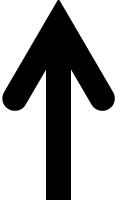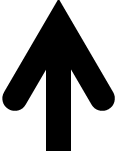Thin Lens Ray Diagrams are useful in books, where use ray diagrams to represent images formed by thin lenses. Ray diagrams are straight lines with arrows that shows direction of light rays.
Points to note when drawing ray diagrams
- when drawing real rays you should used complete solid lines but when drawing virtual images you should use broken lines.
- To locate the image, you draw two of the three important rays from tip of the object towards the lens. The first ray parallel to principal axis and through principal focus and the second ray from the tip of the object through the optical center or the third that passes through the principal focus before moving parallel to the principal axis.
- Where two or more rays intersect after refraction by the lenses is the tip of the image.
- if the object stands and is perpendicular to the principal axis, the image is also perpendicular to the principal axis.
- To complete the image, you draw a line perpendicular to the principal axis from the tip of the image
- If the foot of the object crosses the principal axis, you draw two of the three rays used to locate image for both the tip and the foot of the object. You should join a point object for the image tip with point image of the foot to get the desired image.
- You should represent converging lenses are by the following diagram in drawings:
Thin lens symbols
The figure below shows how we represent convex(convergence lens) on a diagram.

You represents concave lenses in diagrams by the symbol shown.

An object image is usually represented by a straight arrow that is upright but when the image or the object is upside down, the arrow is upside down.

After we have identified the symbols, we can now use the three important rays discussed earlier to represent the ray diagrams.
After the object is drawn and image obtained from the ray diagram, the image formed can be studied by observing it’s nature after drawing.
Example problem on Drawing Ray Diagrams
An object 15cm tall has been placed 32cm from a concave lens of focal length 20 cm. By scale drawing, determine:
(a) position of the image formed
(b) Magnification of the image
(c) The height of the image
solution
We use the scale of 1 cm to represent 5 cm and using two rays to form an image, the resultant image after reflection is as shown

(a) From the diagram, one can see that the image is formed 52cm from the lense.
(b) From the diagram, the height of the image from the principal axis is 24 cm.

substituting for the values of hi and ho, we have:

The same result could be obtained by finding ration of image distance to object distance with some slight variation that comes with measurement errors:

(c ) From the scale diagram, the height of the image is about 24.5cm
Remarks:
The diagram can aslo be used to give further insights about the image formed. For example we can see that it is upside down and is formed by two rays actually meeting therefore it is a real image.
Also the image is taller than the object and hence it is magnified just by looking
Practice questions
An object placed in front of a convex lens of focal length 10cm produces an image at a distance of 15cm from the lens and on the same side as the object. By drawing a suitable diagram, Determine the position, nature and size of the object.


Leave a Reply